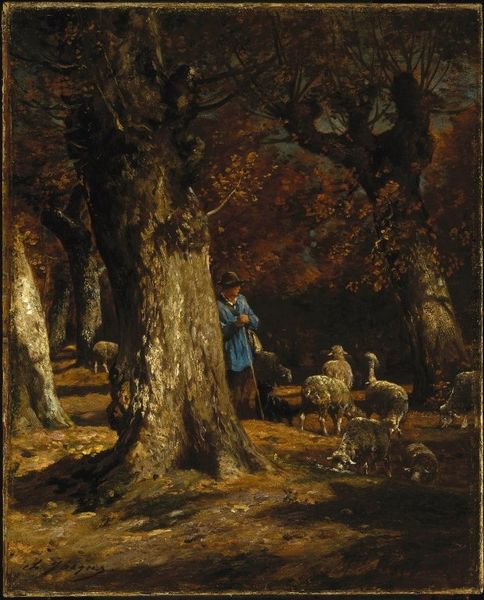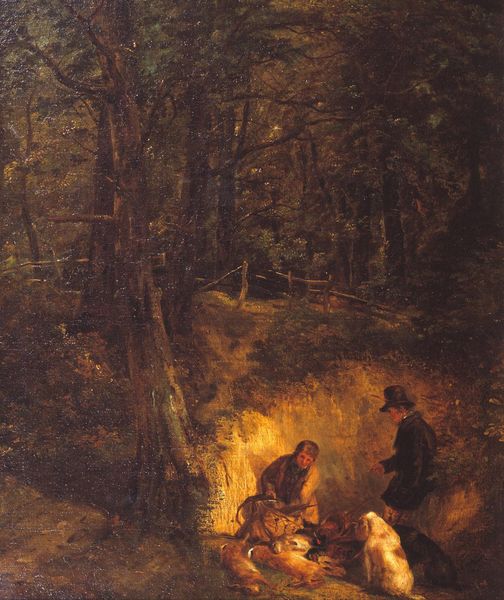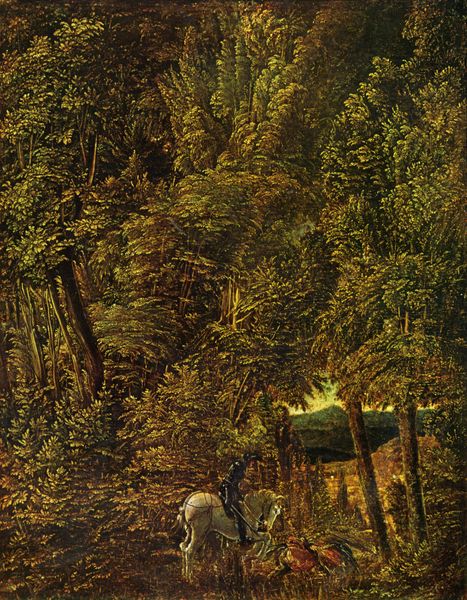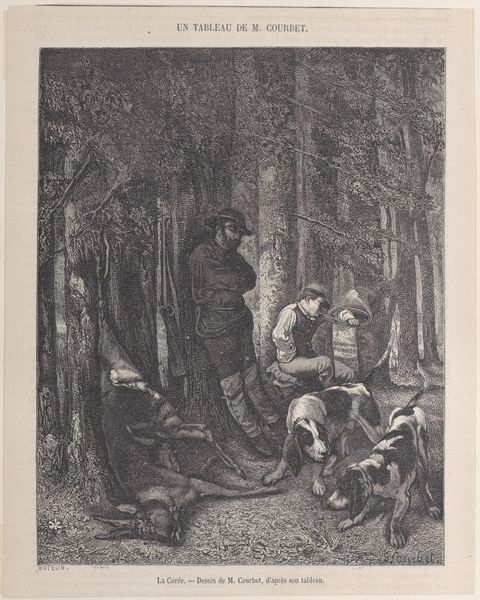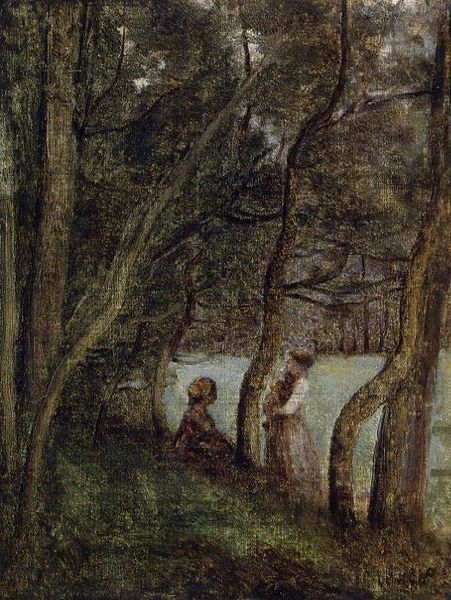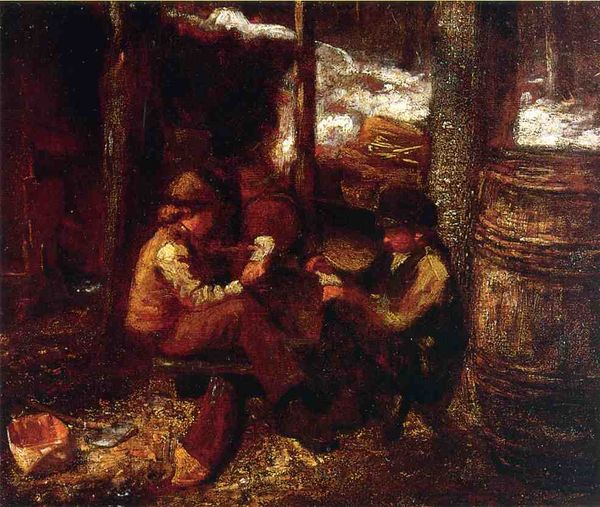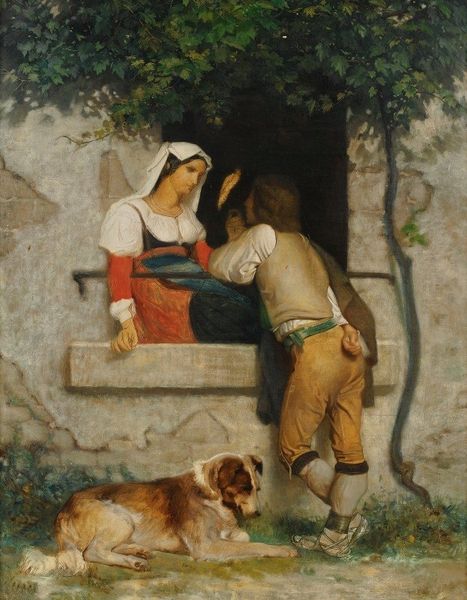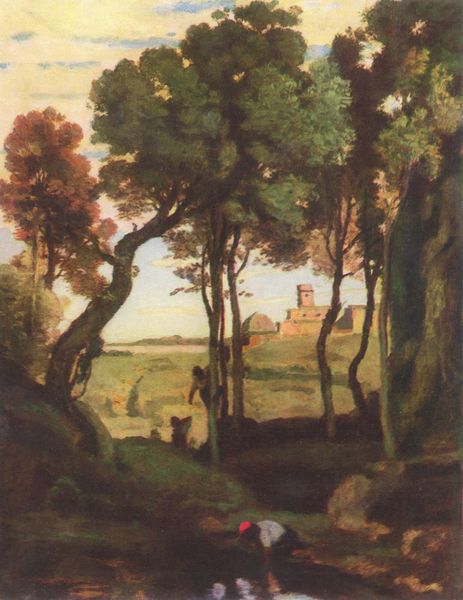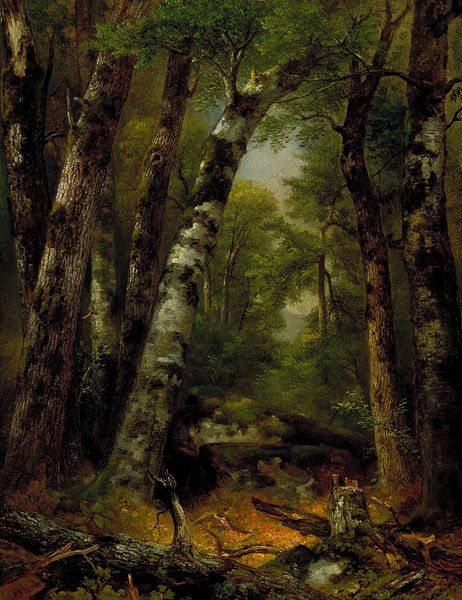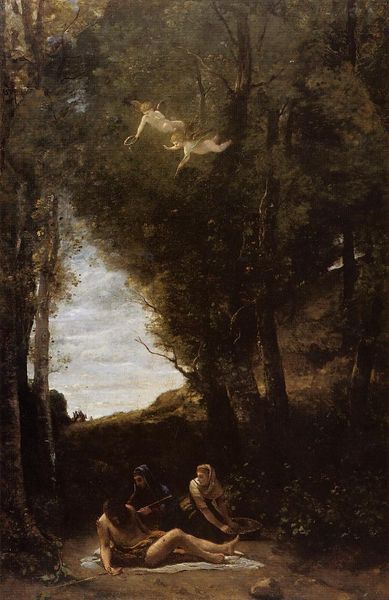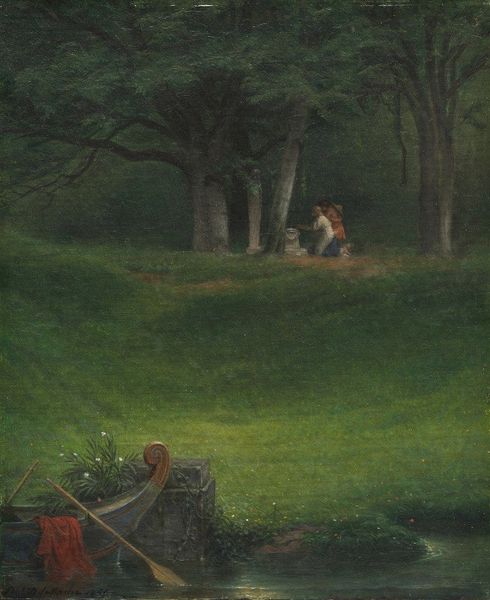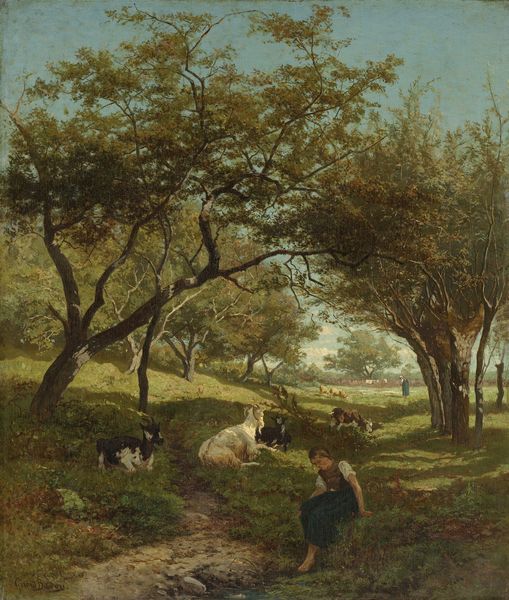
Copyright: Public domain
Curator: Gustave Courbet's "The Quarry," completed in 1857, presents us with a rather striking hunting scene. It's now part of the collection here at the Museum of Fine Arts in Boston. Editor: It hits me first with a sense of stillness amidst action, paradoxically. The somber browns and greens dominate, yet the presence of the deer makes me think about fragility and mortality within labor. Curator: Indeed. Courbet, deeply embedded in the Realist movement, deliberately moved away from romanticized depictions of nature. The scene isn't idealized; it presents the realities of a hunt. The role of paintings and their production became enmeshed with contemporary debates surrounding hunting. Editor: The use of oil paint is incredibly effective here, building texture, especially in the rendering of the fur and the bark of the trees. It makes me think of the labor involved - not only the physical hunt but also Courbet’s own artistic labour in translating this event onto canvas. The consumption and creation all tangled. Curator: And it’s not just about the individual exertion but how institutions legitimized certain activities and forms of representation. Think of the Second Empire's promotion of hunting culture; Courbet's painting participates in, while subtly challenging, this very culture. Editor: It is true. We can notice a connection between the process of making, what that reveals to an observer about that moment of work and nature—that very clearly illustrates Courbet's intention. What a contrast in texture – rough bark to soft fur to smooth horn! The relationship between what exists outside of art and the actual labour, materials, consumption, of creating that moment as a medium. Curator: Ultimately, Courbet invites the viewer to reflect on our relationship with nature, on themes such as human agency, as well as labor's relationship with social identity in the French countryside. Editor: Precisely. Considering the materiality and the setting itself, we see an understanding of what humans take from nature and turn into materials—what the implications are and mean to those outside its viewing. It deepens an otherwise subtle commentary.
Comments
No comments
Be the first to comment and join the conversation on the ultimate creative platform.
